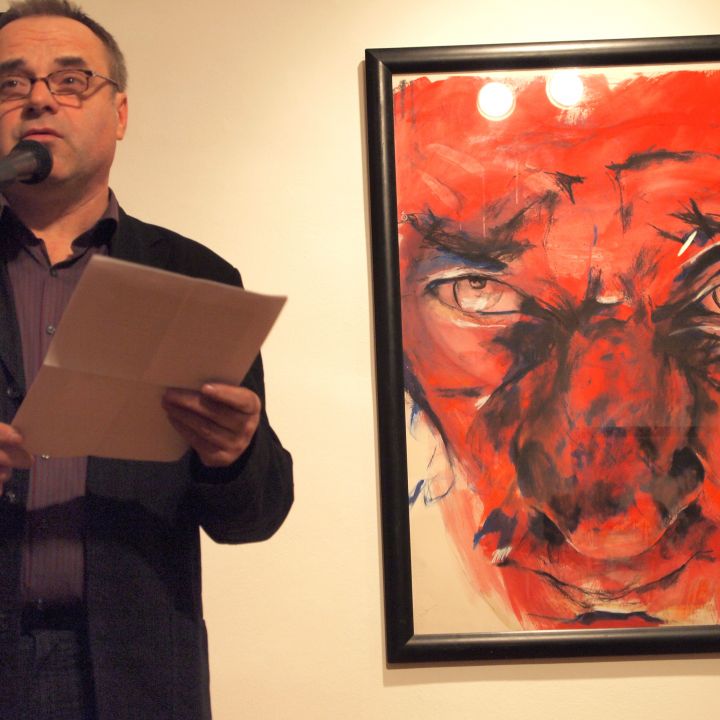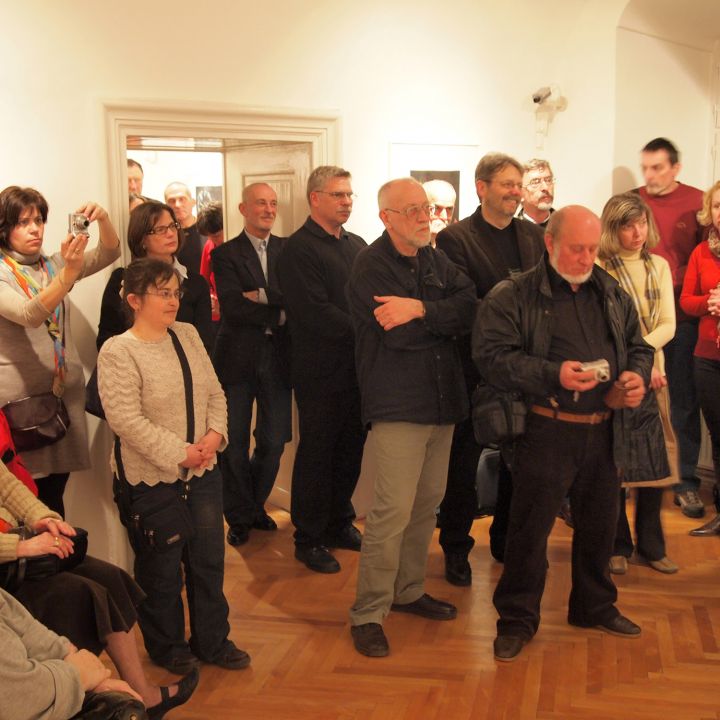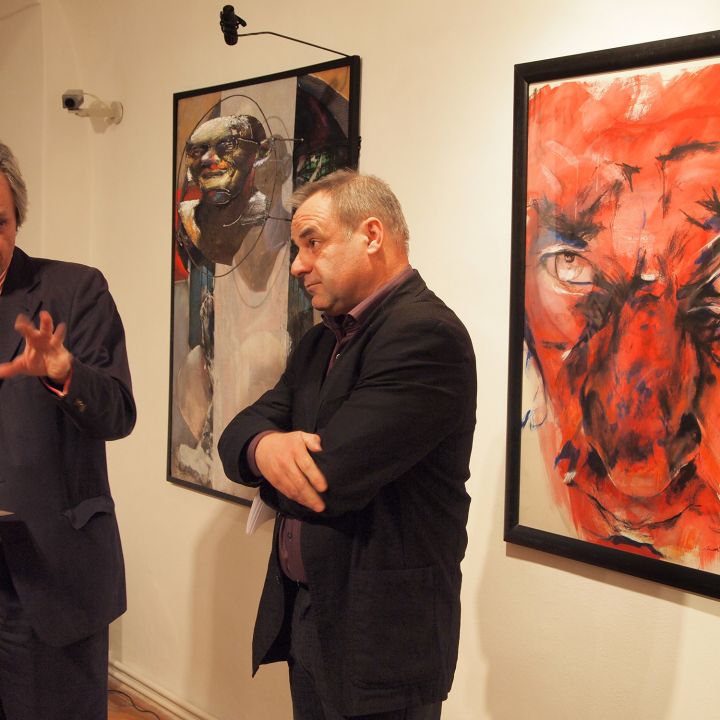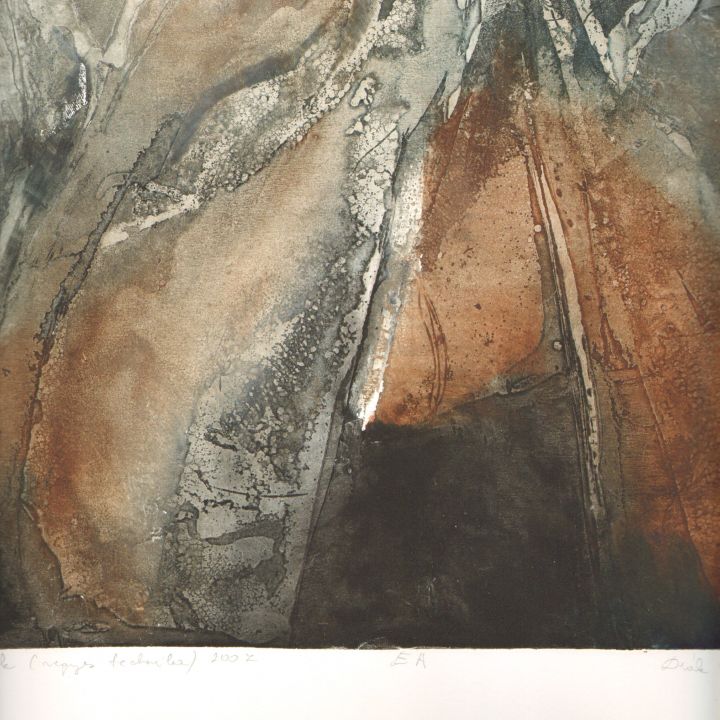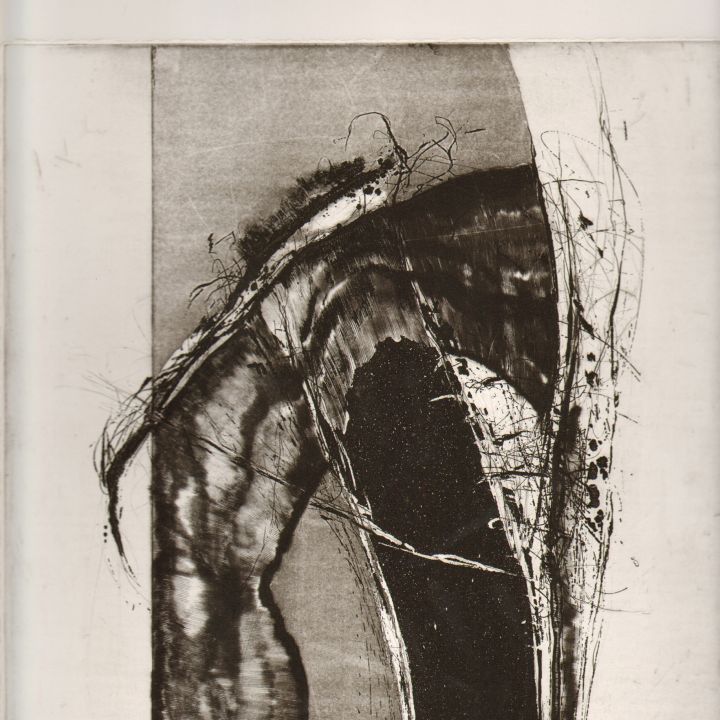László Hegyeshalmi, who thirty years ago was the founding "father" of the workshop, our "better halves" who have also appeared here, who put up with us, our "colleagues" who "walk" the bumpy road of Hungarian rural artistic destiny, and in general everyone who has come to the Csikász Gallery here today.
The Ajka Graphic Workshop was founded in 1982. The workshop was founded by 6 artists and over the years dozens of now renowned graphic artists have participated in its professional work. Imre Kéri, a graphic artist directed the artistic activities of the workshop until 1990. From 1985 onwards the summer artist residencies gained international rank. Over the years Bulgarian, Finnish, German and Transylvanian artists have turned around.
After the initial years the Ajkai Graphic Workshop became more and more immersed in the apparent silence and stillness in which its works were born. Its members matured, individual works of art grew and wherever life threw them, they had to take their place. The workshop was active and although it had numerous exhibitions around the country and beyond, there is little analysis of the professional response. But we know from the many examples in art history that artistic quality and recognition do not go hand in hand. In the case of the workshop one of the most important essences of artistic quality is the knowledge of reproductive graphic techniques, and the masterful application and appreciation of these techniques. Today we often hear that the time of small systems and communities, of comprehensive, tangible scales, of values and completeness that can be experienced is over. The existence and history of the workshop refutes this, a community has been built where personality is a value, where traditional values are preserved and new ones are created. The workshop not only creates, it teaches!
For our exhibition opening today we have 53 works of art created over the last two or three years, most of which we have all been part of creating. The unique prints and reproductions are the result of our summer workshops, where we have the opportunity to explore these techniques, pushing the boundaries of genre and experimenting. Today Ajka graphics are a hallmark of quality in traditional reproduction processes and a thorough knowledge and application of the technique. The technically distinguishable etching, aquatint, aquafortis, zinc etching, cold needle, mezzotint, crackling require professional knowledge and practice developed over a long period of time, which in today's fast-paced everyday life is completely ambivalent, I have half an hour, etching one is absolutely impossible, and who would agree that a lifetime is not enough for this. In the captions of the pictures we can see that the technical boundaries are gradually dissolved with one starting point, but with a different technique, the work is completed and then with a third it takes its final form.
Pilinszky writes somewhere: "To reveal, I think, is to open up, as to speak is really to speak, to listen, to hear. In short, openness. Know this speaking and this listening, which is more than we are." To the outside observer something was always missing, some incomprehensible and inexplicable theoretical and thus tangible artistic goal, an idea or simply a reason for this school-creation intention that flatters us too, to be revealed, but we have never gone into the reasoned deductions, the interpretations that can be judged arbitrary or logical, the iconographic parallels and interpretations of references that can surely be found and experienced in some form within the community. The Ajka Graphic Workshop has always expanded inwards rather than being a strapped organisation of local art making and this has helped to keep this handful of people together. Of course, and this is the most important thing: everyone can live and cultivate their own little world, make their own. The bond could remain human, a friendship and not an interest.
Today we can say that the artists present are very well acquainted with the art of drawing, a form of existence that has been completely independent since Raphael and Dürer. What is more, there is hardly any version of graphic art, hardly any part of the genre, which our artists do not use, do not know and perhaps one could even venture to say that they do not want to. Good graphic designers, just look at the art of drawing, are creatures of a peculiar nature. Either they create value of their own accord and nature, or they take on the task of being advocates of the times, promoters of the aspirations of the times, useful illustrators. Perhaps one can draw a certain conclusion, however, that the collective consciousness and form of graphic art in Ajka is determined by artistic vision, world view and the spirit of the age, guided by the determined artistic intentions and aspirations of decades of work and of course also influenced by each other. The question is how and in what way what is present.
Looking at the pictures side by side, above and below, or even in the background - small and large, colour and black and white, figurative or abstract. It's not that the larger obscures the smaller (let's stick with this example for simplicity's sake), but that the small is not magnified - it is by its very nature small - we feel like fiddling around with it, so it might as well be the same as the large. One can be equated with the other. It can be identified at all, the intention is palpable. That is why everyone is different and yet not, and this diversity, together with quality, gives the community its artistic value. Each one is unique, even if the influence of one person is inevitably amplified, but the influence is incorporated, it can intervene in the creative process, it makes the unique different, even more unique and the work is produced, which only becomes spiritual when another person understands something of it, something that another person adds of himself. That's why 30 years, the past and today, make sense. That's why we must always rise and start again and why there will be people among us who are a little bit strange, a little bit artistic, who are comfortable together - maybe that's where they draw their strength, their faith, their will, so that art history is not just written by others, but written locally for the pleasure of all. Thank you for your attention!
Opening speech by Tibor Csabai

